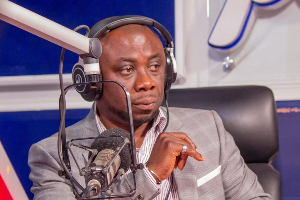Following the restructuring of the Volta River Authority (VRA) and the Tema Oil Refinery (TOR) debts in the last quarter of 2016, the public sector’s share of total Non-Performing Loans (NPLs) fell from 11.3 percent in October 2016 to 5.3 percent in October 2017, according to the November 2017 Banking Sector Report by the Bank of Ghana (BoG).
The private sector, being the largest recipient of outstanding credit balances accounted for the greater proportion of banks’ NPLs with its share increasing to 94.7 percent from 88.7 percent over the review period.
Disturbingly, indigenous private enterprises accounted for 78.2 percent of total NPLs in October 2017 compared with a share of 75.6 percent in the corresponding period last year. Households accounted for 5.3 percent of total NPLs in October 2017 compared with a share of 5.1 per cent in October 2016.
According to the report, the three sectors that accounted for the largest proportions of NPLs were Commerce & Finance, Services, and Electricity, Gas & Water sectors. Together, these accounted for 61.3 per cent of total NPLs in October 2017.
The Commerce & Finance sector, the largest recipient of total credit, was also the sector that contributed the most to the industry’s NPLs, accounting for a share of 35.1 percent in October 2017.
The Manufacturing sector was however the sector with the highest proportion (33.1 percent) of its loans being classified as non-performing as at the end of October 2017 from 29.3 percent in October 2016. The agriculture, forestry and fisheries sector had the second highest sectoral NPL ratio of 32.9 percent, though it declined from 38.1 percent a year ago.
The report added that the banks’ stock NPLs stood at GH¢ 8.30 billion as at the end of October 2017, from GH¢ 6.52 billion in October 2016.
The current stock of NPLs, though high, signals a slow annual growth to 27.2 percent from 58.1 percent in October 2016. Despite this trend, the industry’s NPL ratio increased to 21.6 percent in October 2017 from 19.0 percent a year earlier, due to a slowdown in the growth of gross loans.
Meanwhile, banks operating in the country wrote off GH¢3.6 billion as bad debts for the first 10 months of 2017, about 7.6 percent growth. This is compared with GH¢3.3 billion bad debt written off in October 2016.
In a related development, the stock of banks’ gross loans and advances stood at GH¢38.36 billion in October 2017, representing a year-on-year growth of 0.5 percent in real terms, compared with 2.1 percent recorded in the same period last year. This was on the back of tightened credit stance by banks in response to the large stock of impaired assets.
In real terms, private sector credit comprising loans to private enterprises and households, however, recorded 4.1 percent annual growth in October 2017 after contracting in October 2016. Credit to households, in real terms, grew by 4.5 percent on year on-year basis in October 2017, compared with 0.2 percent growth in October 2016.
Business News of Thursday, 18 January 2018
Source: thefinderonline.com

















